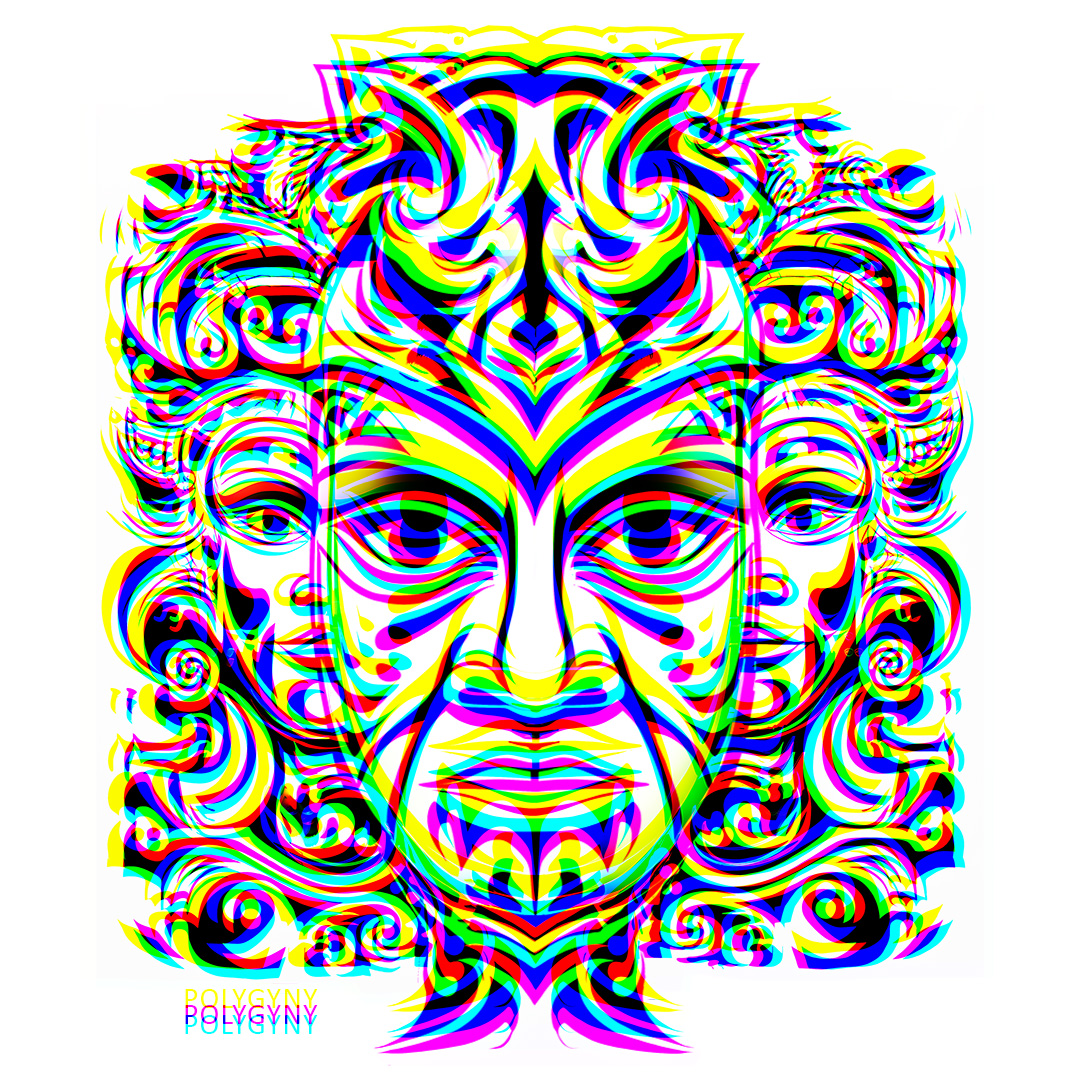Nestled within a cacophony of colours and contrasts, “Polygyny” emerges as a bold testament to the convergence of art and science. At its forefront, a stoic male visage gazes forth, flanked by two ethereal female forms, their presence a whisper in the wind of abstraction.
Rendered in a tribal-inspired aesthetic, the canvas pulses with primal energy, each splash of colour a testament to the universal rhythms that govern existence. Vibrant colour intertwine with stark black and white, creating a visual tapestry that speaks to the depths of human perception.
Yet, hidden beneath this surface lies a secret waiting to be unlocked. Through the lens of a prism, a remarkable transformation takes place. The once unified palette fractures into distinct realms of colour, each subject assuming its own chromatic identity as shown below.

As the colours shift, the title turns black and white, the female on the left turns blue and yellow, the female on the right turns red and cyan while the male in the middle turns green and magenta.
But what causes this spectral shift? For the curious mind of a budding scientist, the answer lies in the principles of light and optics. Just as a prism bends and disperses light into its constituent wavelengths, so too does the placement of the colours as it manipulates the spectrum to reveal hidden truths.
As light passes through the prism, it undergoes a process of refraction, bending at different angles depending on its wavelength. This separation of light into its component colours creates the vibrant spectrum that we perceive.
And so, in the alchemy of “Polygyny,” art and science converge in a symphony of colour and light. Through its intricate interplay of form and optics, it invites us to explore the mysteries of perception and reality, where the boundaries between art and science blur and dissolve.
